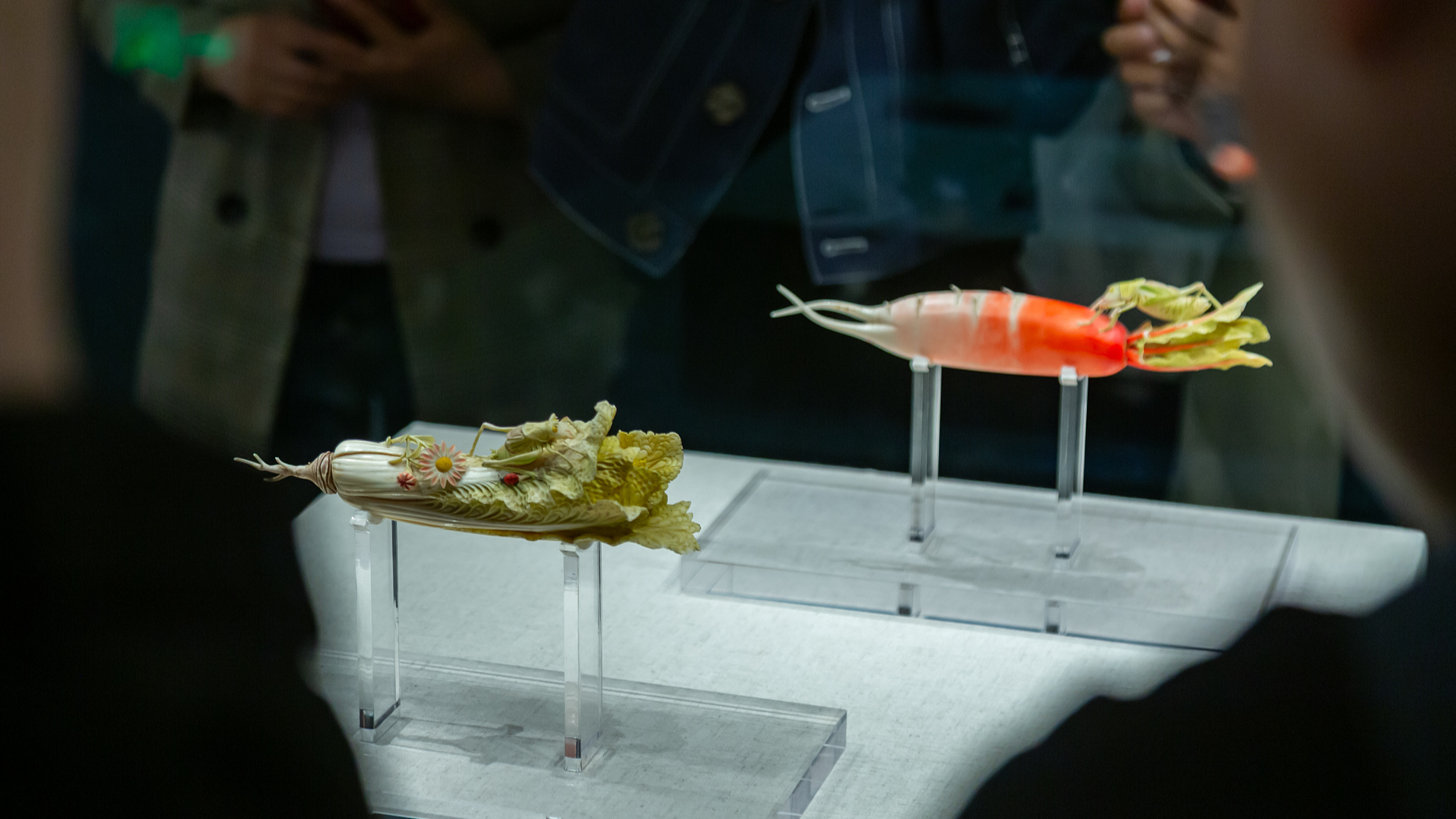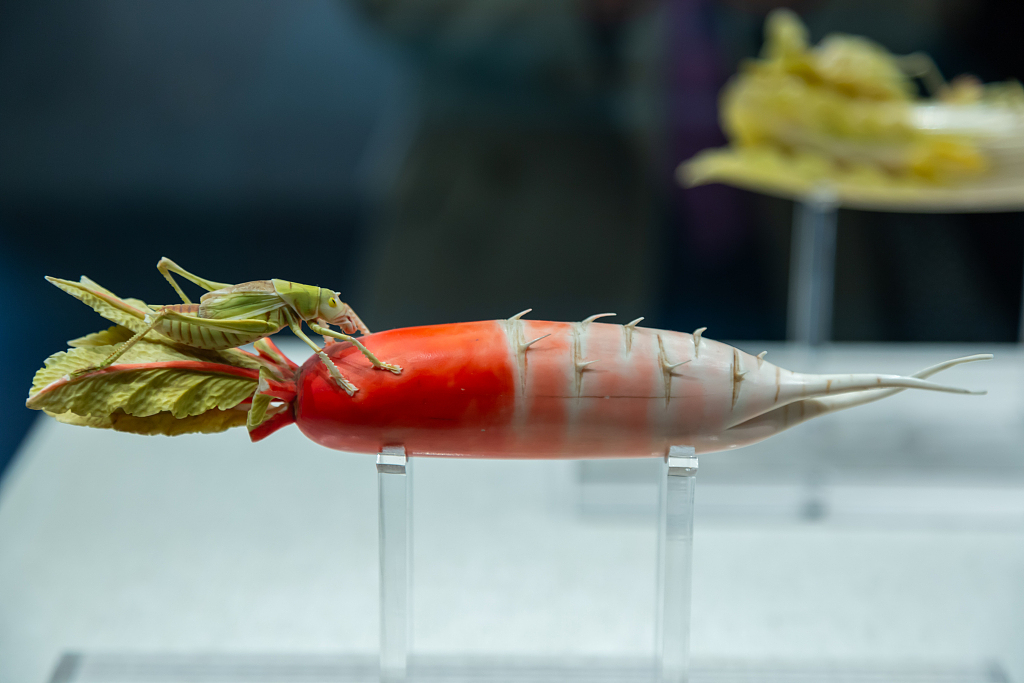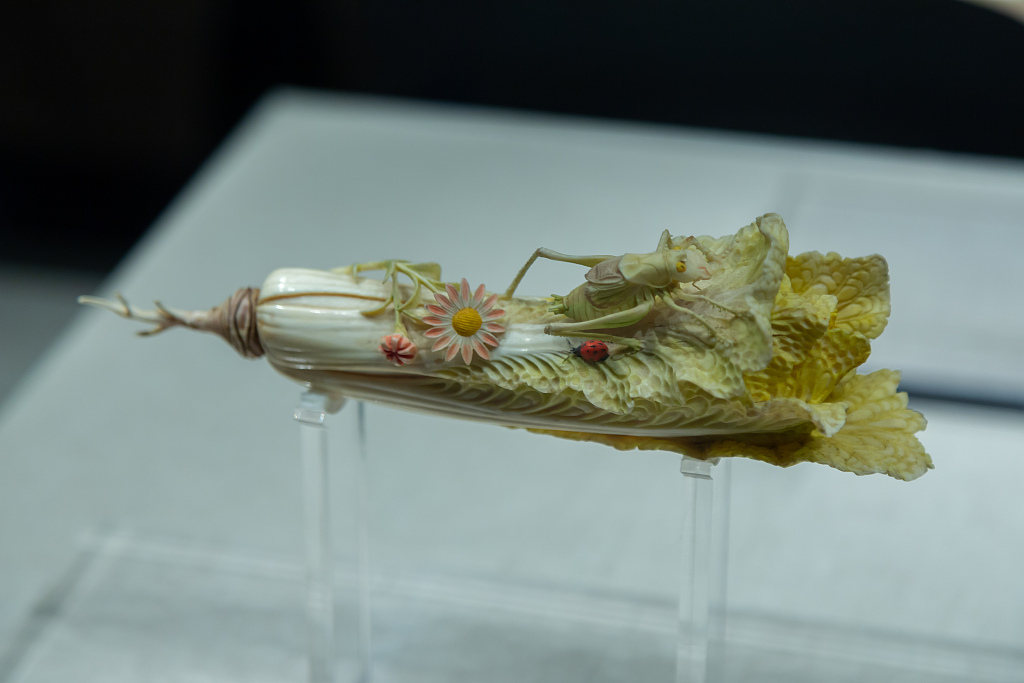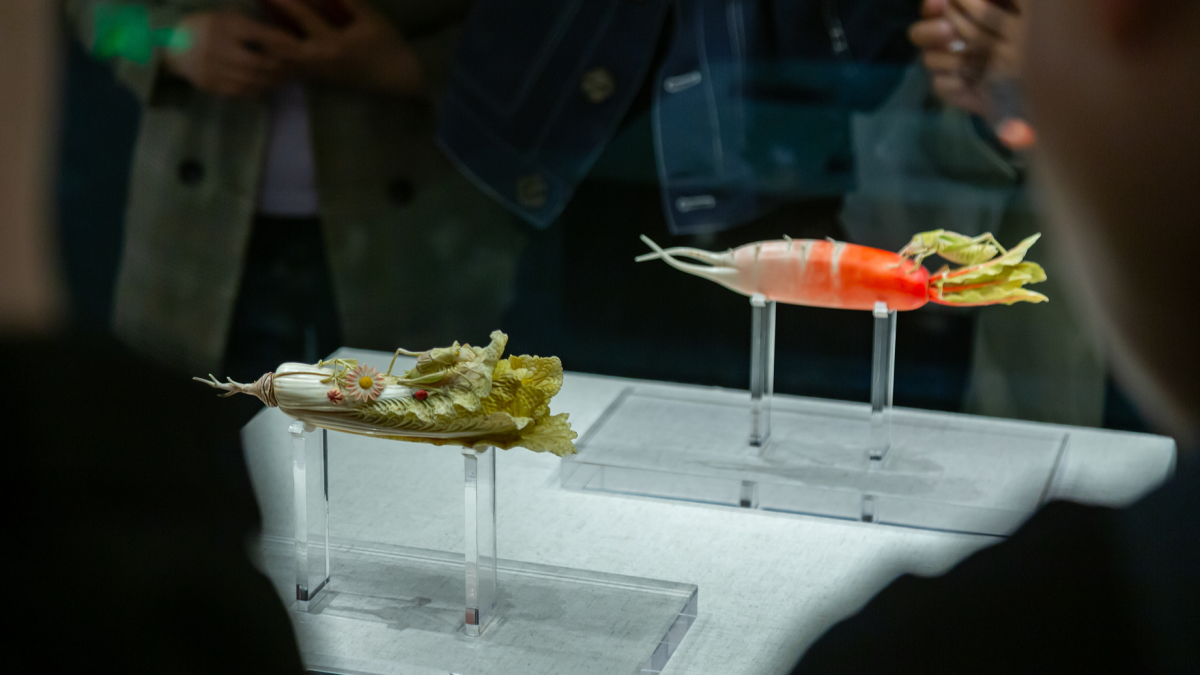 A photo taken on May 5, 2024 shows people appreciating ivory radish and cabbage on display at Henan Museum in Zhengzhou, Henan Province, China. /CFP
A photo taken on May 5, 2024 shows people appreciating ivory radish and cabbage on display at Henan Museum in Zhengzhou, Henan Province, China. /CFP
A photo taken on May 5, 2024 shows people appreciating ivory radish and cabbage on display at Henan Museum in Zhengzhou, Henan Province, China. /CFP
During the recently concluded May Day holiday, museums remained a hot destination. Henan, known as a province rich in cultural relics, has unearthed countless national treasures. Among the 130,000 artifacts housed in the Henan Museum, a pair of radish and cabbage sculptures stood out as one of the museum’s top 10 treasures.
As soon as the museum opened its doors, visitors flocked straight to the exhibition hall, equipped with professional cameras, eager to capture their favorite star exhibits. What kind of radish and cabbage could withstand the test of centuries and still look so “fresh and tender?”
 A photo taken on May 5, 2024 shows a closer look at the ivory radish on display at Henan Museum in Zhengzhou, Henan Province, China. /CFP
A photo taken on May 5, 2024 shows a closer look at the ivory radish on display at Henan Museum in Zhengzhou, Henan Province, China. /CFP
A photo taken on May 5, 2024 shows a closer look at the ivory radish on display at Henan Museum in Zhengzhou, Henan Province, China. /CFP
This is a pair of radish and cabbage carvings made of ivory during the Qianlong period of the Qing Dynasty (1644-1911). The ivory radish is about 27 centimeters long and weighs 229 grams. Its root gradually changes from red at the top to pink in the middle and white at the base, with naturally curved roots. The green leaves, with their main veins dyed red, exude a sense of movement as a grasshopper extends its front legs from the radish leaves toward the stem, eagerly seeking the sweet juice.
 A photo taken on May 5, 2024 shows a closer look at the ivory cabbage on displayed at Henan Museum in Zhengzhou, Henan Province, China. /CFP
A photo taken on May 5, 2024 shows a closer look at the ivory cabbage on displayed at Henan Museum in Zhengzhou, Henan Province, China. /CFP
A photo taken on May 5, 2024 shows a closer look at the ivory cabbage on displayed at Henan Museum in Zhengzhou, Henan Province, China. /CFP
About 23 centimeters long and weighing 260 grams, the ivory cabbage shows layers of its white stem, green leaves, yellow heart and brown roots with clear veins. Two small flowers adorn the stem, one budding and the other in full bloom. A grasshopper rests on the back of the cabbage, blending seamlessly with the green leaves as it savors the fresh juice. Next to it lies a ladybug, its antennae barely visible, seemingly absorbed in its own feast.
The homophony of “cabbage” and “radish” in Chinese conveys the auspicious notions of continued prosperity and progress. In Chinese culture, grasshoppers symbolize family prosperity and longevity due to their strong reproductive abilities. So, the themes of “radish,” “cabbage,” and “grasshoppers” were common in art during the Ming (1368-1644) and Qing (1644-1911) dynasties, signifying auspiciousness through imagery.
These ivory radish and cabbage exhibits not only showcase the craftsmanship of ancient artisans but also reveals the profound symbolism of auspiciousness in traditional Chinese culture.
